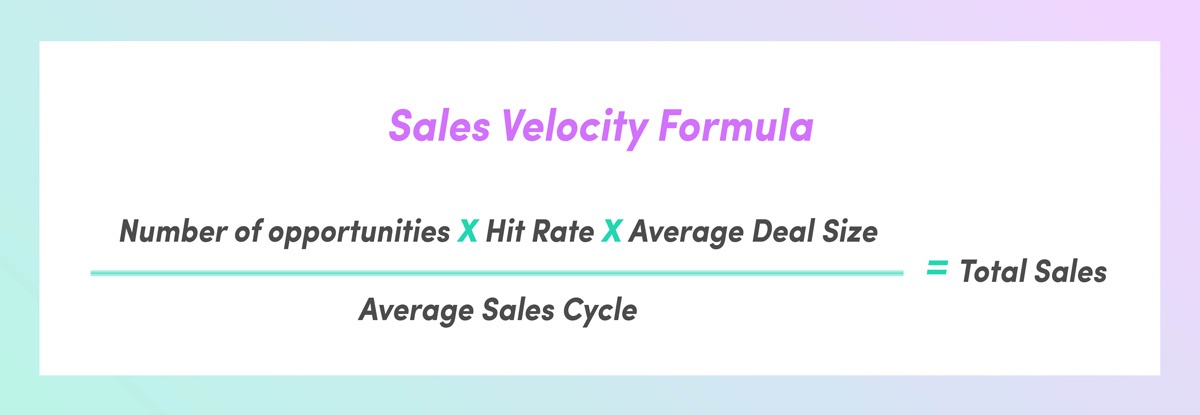These Are The Sales KPIs Your Business Should Focus On
The most successful sales organizations are the ones working systematically. To do that you have to have clearly defined goals, sales KPIs (key performance indicators, that is), and relentlessly measure and monitor how your sales and marketing efforts contribute to help you reach them.
This is why performance sales development teams have well thought out sales KPIs that are being tracked daily, weekly and monthly.
With modern technology, the question is not what you can measure, but what you benefit from measuring. Following the right metrics will help you as a B2B sales executive evaluate the performance of your team and steer them in the right future direction. Measuring the wrong or additional metrics will simply take precious time away from the things that matter.
What's the SINGLE most important sales KPI?
There’s no one universal answer to the question of which sales KPI is the most important one to track. Do a quick search for “most important sales metrics” and you’ll see very different replies emerge.
Sales development teams work differently, and there are a lot of variables that have an impact on an ideal KPI mix. For B2B companies, there is no perfect metric to use all the time. Your single most important sales KPI will always depend on your business model, your product and the stage of your company’s growth.
Yeah, I get it… but what’s THE single most important sales KPI?
I hear you. That first answer might not have totally satisfactory. Even though, there might not be a universal answer, here we’ll walk you through a method that can help you decide what KPIs are the right KPIs for your organization. That method is the sales velocity formula.
Find the right sales KPIs to focus on
The sales velocity formula can help you find out what sales KPIs you should focus on. Most sales professionals are at least somewhat familiar with this equation.
While sales prospecting is often associated very strongly with the activity happening at the top of the funnel (number of leads/opportunities) most companies acknowledge that the quality of each prospect has a significant impact on hit rate, average deal size and also sales cycle.
Sales results can only be improved if the actions your team is taking on a daily basis are having an impact on one or many of those factors in the formula. The challenge is finding what prospecting activities help your team increase its total performance. It's these activities you should set as sales KPIs.
For example, if you believe asking for referrals is a great way to increase the number of high quality meetings (opportunities), you’re positively impacting both the number of meetings and their hit rate. Asking for referrals can then be one KPI for your team.
What sales KPIs should salespeople have depending on their work description
Typically, people who are responsible for finding and creating new opportunities are called sales development representatives or business development representatives. If companies don’t separate different parts of the sales process for different people, then the responsibility of finding new prospects and creating new opportunities falls into sales manager’s/account manager’s hands.
Common sales KPIs for people who prospect might look as follows:
- Number of new companies found
- Number of new contacts added
- Number of dials, emails, conversations
- Number of booked & held meetings
- Hit rate, ACV and sales cycle
- LTV, CAC, LVR
Prospecting KPIs can be placed into the following four categories
Activity/task related KPIs
- Number of dials per day
- Number of emails per day
- Number of conversations per day
- Number of new companies & contacts added per day
These sales KPIs mainly focus on how much prospectors have accomplished in a given day. Especially in the U.S., where sales outreach platforms are commonplace, these numbers are being tracked automatically. Most team leaders set a numeric goal for dials, emails and conversations. They also typically want to analyze the numbers and might track metrics such as “time on the phone”, “bounce rate”, “email open rate” etc.
Prospecting result KPIs
- Number of meetings booked / held
- Number of new sales qualified opportunities
These KPIs focus heavily on the outcome of all the activities salespeople are doing. Regardless of the number of dials or emails, typically sales leaders are more keen on understanding how many new discovery/first sales meetings have been booked and how many of those booked meetings materialize in held meetings. If sales development people are also responsible for qualifying each opportunity by having a discovery call with the prospect they typically track the number of meetings that fit the criteria of being sales qualified.
Sales results related KPIs
- Hit rate
- Average deal size
- Average sales cycle
If salespeople are also responsible for conducting the meetings they book and closing the deals, then their KPI stack also includes other sales velocity metrics. Hit rate measures the percentage of the meetings that convert into closed deals. Average deal size typically reflects not only the sales skills but also the quality of the prospect. The length of the sales cycle can be reduced if salespeople manage to prospect companies where timing for the purchase is right. There are lot of publicly available sales trigger events that can guide salespeople to identify those opportunities. And with this template you can easily create a game plan the most relevant trigger events for your business.
Business related KPIs
- Client acquisition cost
- Customer lifetime value
- Revenue/lead
- Lead velocity rate
On a personal level, salespeople are not measured by client acquisition cost or customer lifetime value. However, these are very important metrics for executive teams and sales development directors to keep an eye on, because they reveal lot of insights on the scalability potential of the business. All four factors of the sales velocity formula play an important role in all these metrics and that’s why we feel they are important to introduce when talking about prospecting KPIs.

Understand how individual sales KPIs impact your business' total results
Client acquisition cost (CAC) tells you how much you need to spend on sales and marketing to acquire one new customer. Lifetime value (LTV) indicates the value of that customer over the entire period that they remain a customer. LTV of course needs to be higher than CAC to run a sustainable business and prospecting plays a role in both metrics. The more qualified opportunities salespeople prospect and the higher the volume of those prospects, the lower your CAC. If prospects fit the company’s ideal customer profile, odds are they stay a customer longer than the prospects that don’t fit into that ideal customer profile.
We have also seen companies measure revenue per lead and the so-called lead velocity rate, which shows the monthly increase in number of sales and qualified leads the company is able to generate.
Pick the sales KPIs you feel are most important to your business and make sure people feel they can impact their individual KPIs and metrics.
When designing ideal KPIs for your prospecting process, our tip is to keep it simple. Pick the metrics you feel are most important to your business and make sure people feel they can impact their individual KPIs and metrics. On a strategic level, it’s important to measure the development of your sales velocity and, if planning to scale business rapidly, CAC and LTV might be useful indicators to start tracking systematically.
Always track your sales activity
As we have seen, the sales velocity formula is an excellent tool to choose the right sales KPIs. Sometimes, however, salespeople don't need complex a formulation to find out how they are doing in their day-to-day. With this practical sales activity tracking spreadsheet, salespeople can measure all their activities of prospecting, calling, and meeting customers. After a few weeks, the spreadsheet will reveal very interesting trends that will tell what works and what doesn't in your sales process.

